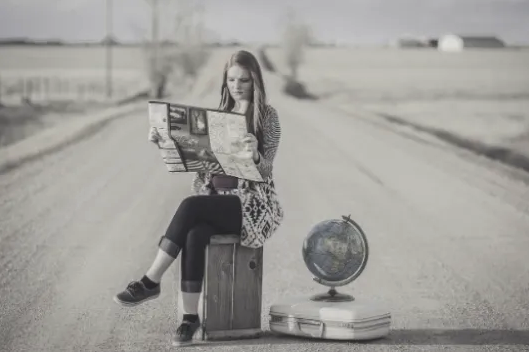is believed that maps have been around since perhaps 16,500 BC. The oldest known preserved maps were made on clay tablets around 2,300 BC. The first known map of the world is believed to have been created in 546 BC. Today we carry them in our pockets, but they’re not clay tablets.
Maps changed our understanding of the world and they’re doing so even more in the digital age. They impact our shared realities, economic systems, geopolitics, how we organised our communities and even societies. In other words, all aspects of human culture.
Maps are in a sense a form of language, time machine, sensemaking tool and reality check all in one. We even make mind maps that serve a similar function, but for ideas and concepts rather than physical places and spaces. We are mapping our DNA and animal genomes. Humans like maps.
Maps are one of humanity’s most important communication and social organising technologies. They are vital public tools.
With the rise of the smartphone and the comparative ease and lower cost of putting satellites into low orbit, maps are beginning to play an even bigger role in our daily lives, one that will only grow. And have yet again, profound impacts on human societies.
Apple and Google are locked in a heated battle for the map app on your phone. There are other large, but often behind the scenes companies like Esri and others provide commercial and military mapping related services.
Now, AWS (Amazon), Microsoft, Meta and TomTom have joined up to create the Overture Maps Foundation to counter the power of Google Maps. While TomTom has detailed maps, it’s missing key data elements and services that would make it more valuable to industry and consumers. It will be Open Source as well.
Maps are playing an increasingly important role as geopolitical soft power tools as well. China just released Beidou. It’s primary purpose of course, is military. It needs to be separated from the American GPS system. Which of course means it will offer both military and commercial services to vassal states to increase its economic and military influence in those nations.
A unique feature of Beidou is the ability to send 120 text character messages between satellites and receivers, which could play a vital role in search and rescue for ships at sea and people lost in the wilderness and natural disasters. They are also testing inter-satellite linking, which reduces the reliance on ground stations. America and the GPS system are falling behind.
The Real Impacts Of Maps in the Digital Age
Amateur archeologists used Google Earth to discover a Roman era villa in the U.K. that turned out to have central heating. They also found mysterious stone gates in the Saudi Arabian dessert. There are many other finds. These discoveries are playing a key role in understanding our past, which in turn is re-shaping our understanding of human societies and evolution.
An artist in Germany fooled Google Maps traffic service by hauling 90 smartphones in a little red wagon across a bridge in Germany. This caused motorists to reroute to other bridges causing traffic jams in other areas. This impacts our sense of where we are in a given time and shows how maps influence behaviour.
Apple Maps and Google Maps layer in businesses from retail to restaurants. This influences our buying decisions and how we might move around an area during the day to buy things. This impacts economic activity. It also changes the way we perceive our societies, communities and urban living.
Remember when Pokemon Go launched? As Shoshana Zuboff in her book “The Age of Surveillance Capitalism” pointed out, the big money make for Pokemon Go parent company Niantic was selling location services to businesses. As players came near a restaurant for example, they could message players with specials to entice them in.
Maps are adding yet another virtual layer to our lives, further strengthening the bonds of our phygital world.
Google Maps has some indoor maps of buildings as well. Canadian retail giant Canadian Tire enables price scanning with QR codes and also in-store maps via their app.
Map apps may be the first large scale use of AR beyond gaming. AR has struggled to find mass market adoption for years, largely remaining where Virtual Reality is; limited niche applications.
Our smartphones are the linchpin that makes most all of these map applications work. Consider that most anyone with a smartphone always has it within three feet or a metre of themselves.
So available and ubiquitous have maps become that they’re becoming “invisible” in the sense that we expect them to just be there when we need them and to what we want. Maps and the interesting ways we use them don’t get anywhere near the kind of hype that A.I. or crypto does, but they’re importance is no less. Hence, they are an invisible technology.
In the coming years, maps will play a role in our evolving societies, perhaps in ways we can’t quite imagine. But someone will imagine a new application that will help improve our lives. Maybe they’ll figure it out using a mind map?


Leave a comment